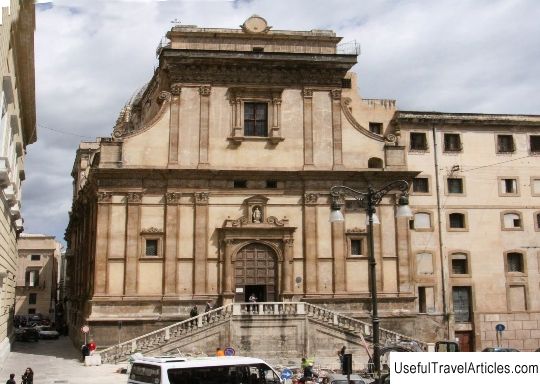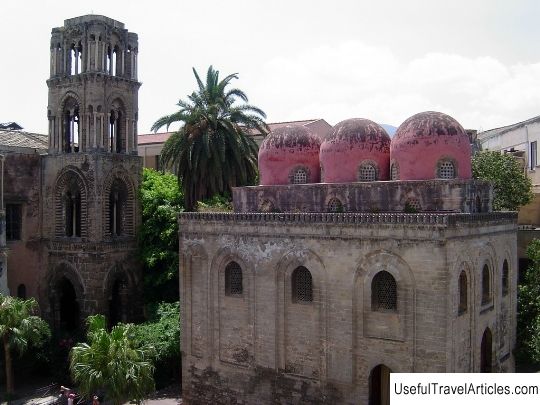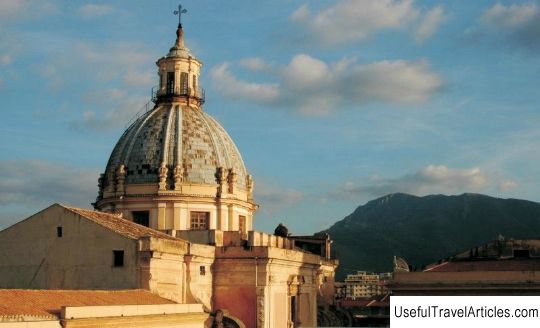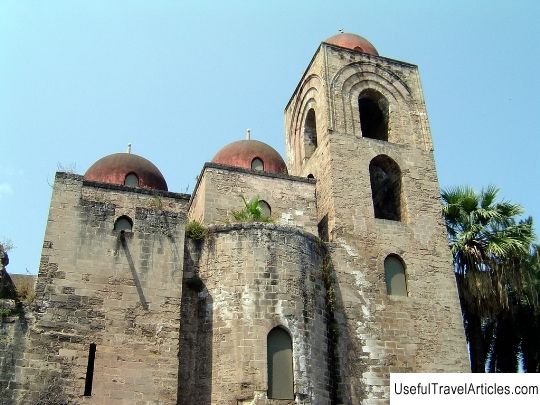La Martorana description and photos - Italy: Palermo (Sicily)
Rating: 8,0/10 (3900 votes) 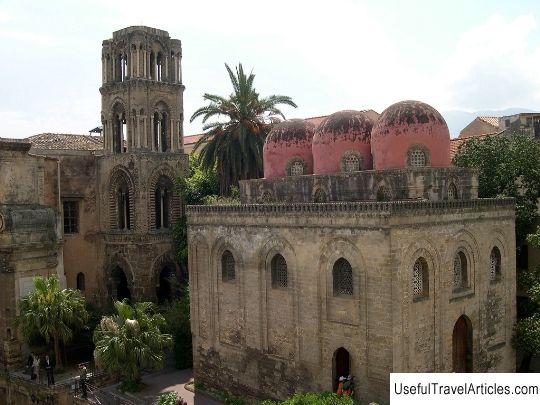
La Martorana description and photos - Italy: Palermo (Sicily). Detailed information about the attraction. Description, photographs and a map showing the nearest significant objects. The title in English is La Martorana. Photo and descriptionMartorana is one of the two cathedrals of the Diocese of Piana degli Albanese (Italian-Albanian Catholic Church) in Palermo. The official name of the church, located in Piazza Bellini, is San Nicola del Greci, and among the people it is also known as Santa Maria del Ammirallo. Next to it are the temples of San Cataldo, Santa Caterina and San Giuseppe dei Teatini. Martorana was built in the 12th century in the Arab-Norman style common at that time throughout Sicily - the unique Byzantine frescoes of that era, one of the oldest on the island, have survived to this day. The peculiarity of the church is that it harmoniously combines the features of the Byzantine, Greek and Islamic heritage. Initially, the church was dedicated to the Mother of God, what her ancient name says - Santa Maria del Ammirallo. This happened, according to historical sources, in the middle of the 12th century. The temple was adjacent to the palace of St. George of Antioch, which was later included in the monastic complex of Martorana, but, unfortunately, was destroyed during the Second World War. For three centuries, Santa Maria del Ammirallo belonged to the Greek parish. Most likely, it was in those years that the bell tower of the church was built. In 1194, a Benedictine convent was founded next to the church, named Martorana after its founders - Geoffroy and Heloise Martorana. In the first half of the 15th century, Santa Maria del Ammirallo was officially incorporated into this monastery - this is how the church got its second name. In the 17th century, the architect Andrea Palma added a baroque facade to the northern part of the church, which today adorns Piazza Bellini. At the same time, on the site of the destroyed apse, a chapel was erected, also in the Baroque style. In the second half of the 19th century, the Monastery of Martorana was abolished and the church became the property of the Italian government. In the years 1870-1873, serious restoration work was carried out in it, during which some of the Baroque elements were removed. And in 1935, Mussolini transferred the church to the Albanian community of Palermo, which made it the second cathedral of its diocese. After the Second World War, Martorana received the official name of San Nicola del Greci, since the first cathedral with this name was destroyed during the bombing of the city and its parish was transferred to Martorana. True, this name never became firmly established among the inhabitants of Palermo. Today Martorana is one of the city's most popular medieval tourist attractions and the most popular church among newlyweds. Its interior can be seen in the movie "The Talented Mr. Ripley". And the name of the church is also the artificial marzipan fruit that the nuns once made for Easter - the fruit of Martorana.         We also recommend reading Art House Bregenz (Kunsthaus Bregenz) description and photos - Austria: Bregenz Topic: La Martorana description and photos - Italy: Palermo (Sicily). |
